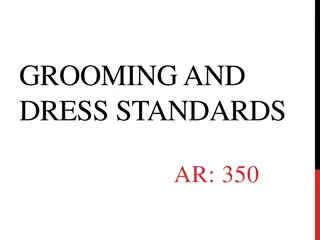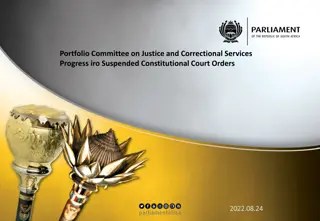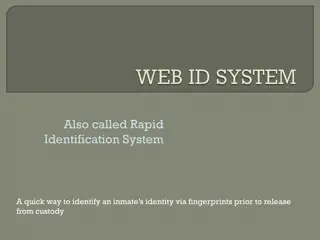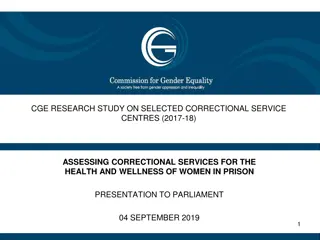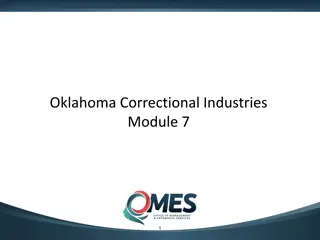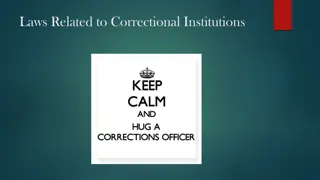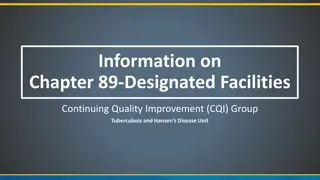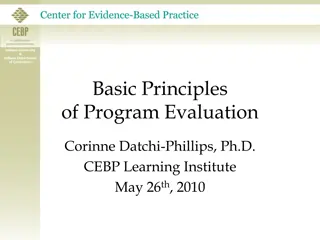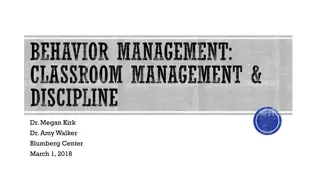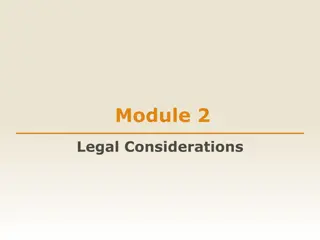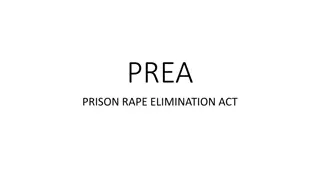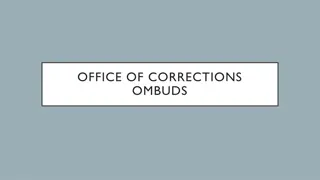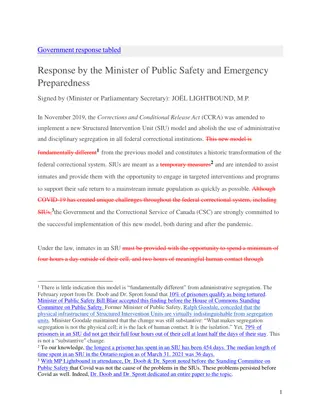Understanding Inmate Behavior Management in Correctional Settings
Inmate Behavior Management in correctional facilities involves supervising inmates, implementing corrective discipline, and fostering a fair and consistent environment. It emphasizes the importance of behavior management plans, identifying undesirable traits in supervision, and passing educational assessments. By focusing on behavior rather than physical containment, correctional officers can guide inmates towards positive behavior and clearly communicate expectations. An effective inmate classification system ensures fairness and consistency in managing the inmate population.
- Inmate Behavior Management
- Correctional Settings
- Supervision
- Corrective Discipline
- Behavior Expectations
Download Presentation

Please find below an Image/Link to download the presentation.
The content on the website is provided AS IS for your information and personal use only. It may not be sold, licensed, or shared on other websites without obtaining consent from the author. Download presentation by click this link. If you encounter any issues during the download, it is possible that the publisher has removed the file from their server.
E N D
Presentation Transcript
To provide the knowledge, skills, and abilities to supervise inmates.
Upon Completion the student will be able to . A. Identify the importance of an Inmate Behavior Management Plan B. Explain the importance of being fair, firm, and consistent with inmates
A. State the necessity of corrective discipline inside a correctional setting B. List undesirable traits of inmate supervision C. Pass a written test with a minimum score of 80%
An Inmate Behavior Management Plan is based upon two major areas: podular direct supervision and inmate classification.
Assessing the risks and needs of each inmate at various points during his or her detention. Assigning inmates to housing. Meeting inmates basic needs. Defining and conveying expectations for inmate behavior. Supervising inmates. Keeping inmates occupied with productive activities.
: It is important to recognize that correctional officer s focus be redirected from the notion of their job being physical containment to behavior management. The following chart illustrates examples of the redirected focus.
Physical Containment: Staff perceive inmates as inherently violent, dangerous, and destructive Staff order inmates to follow directives Behavior Management: Staff perceive inmates as capable of rational and positive behavior Staff clearly state the jail s expectations for inmate behavior and motivate inmates to meet them.
An objective inmate classification system, regardless of the type of supervision/facility model, provides for equity, fairness, and consistency in managing the general inmate population. In principle, all inmates should be classified by the same objective criteria supported by specific policies and procedures, including designated housing areas, decision guidelines, and program eligibility criteria.
This provides reasoning to support the decision making process and eliminates arbitrary decisions. For example, the various security level classifications should define and determine an appropriate range of eligibility for certain programs, privileges (e.g., day release or trustee positions for minimum-security inmates, etc.).
A necessary component for this application of classification is a regular periodic review of an inmate's current security level classification. This provides structure for monitoring and tracking inmate behavior, and allows for the inmate to work his way to a lower security level (i.e., increased eligibility for programs, housing, special privileges), or, conversely, to higher security levels (i.e., restricted housing, etc.) as a result of behavioral problems.
Inmate discipline should achieve several goals. Making inmate conduct conform to a standard of behavior that ensures a safe and orderly living environment. Instilling respect for authority. Teaching values and respectful behavior (in a group of people who, by definition, have not displayed good values and behavior) that inmates may continue to use once they reenter the community.
Keeping in mind the goals of disciplinary actions, there are three aspects of discipline essential to an effective inmate disciplinary program. 1. There should be a written set of rules defining expected inmate behavior and procedures for handling misconduct. Most institutions have a misconduct code a list of offenses that are subject to punishment in the correctional setting. An adjunct of that list of offenses should concern the types of sanctions that may be imposed if the rules are broken.
2. The rules for discipline must be communicated carefully and thoroughly. All staff members must be taught how the inmate disciplinary program works, in general and specific terms, because every employee may be involved (as a witness, or reporting official, or in some other capacity) in the disciplinary system. Inmates must also be given the details of the system. They must know the kind of responsible behavior that is expected of them, add they should learn the penalties for misbehavior. All staff and inmates should be given a written statement of the policy.
3. The disciplinary policy must specify clearly how inmates will be notified of suspected misconduct, how sanctions will be imposed, and what their rights to be heard are (along with their rights to appeal, if any).
The following are traits correctional officers should not have. Prejudices: You cannot allow personal prejudice to interfere with job performance. These prejudices include ethnic, religious, racial, sex, and crime committed
Fear of Inmates: At times new officers can be intimidated by the correctional setting. Inmates will always pick up on this and try to continue that intimidation. Once inmates establish your fear of them it will become very difficult to effectively control a group of inmates
Fraternization with Inmates: Inmates will often attempt to get close to in order to set you up or gain favors from you. If this is allowed to happen it may ultimately lead you to termination of employment.
Failure to take Disciplinary Action: Officers must be willing to hold individual inmates accountable for meeting behavioral expectations. You must continually be aware of inappropriate behavior, and choose the most effective method in addressing the behavior. Failure to take corrective action or show fear will cause a loss of credibility and respect in a unit.


